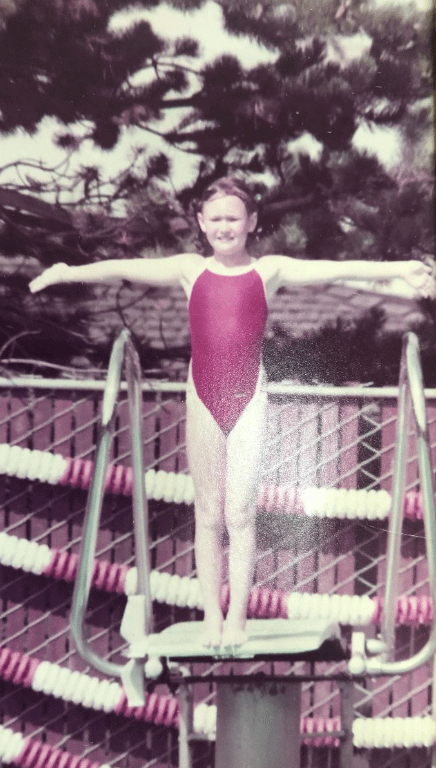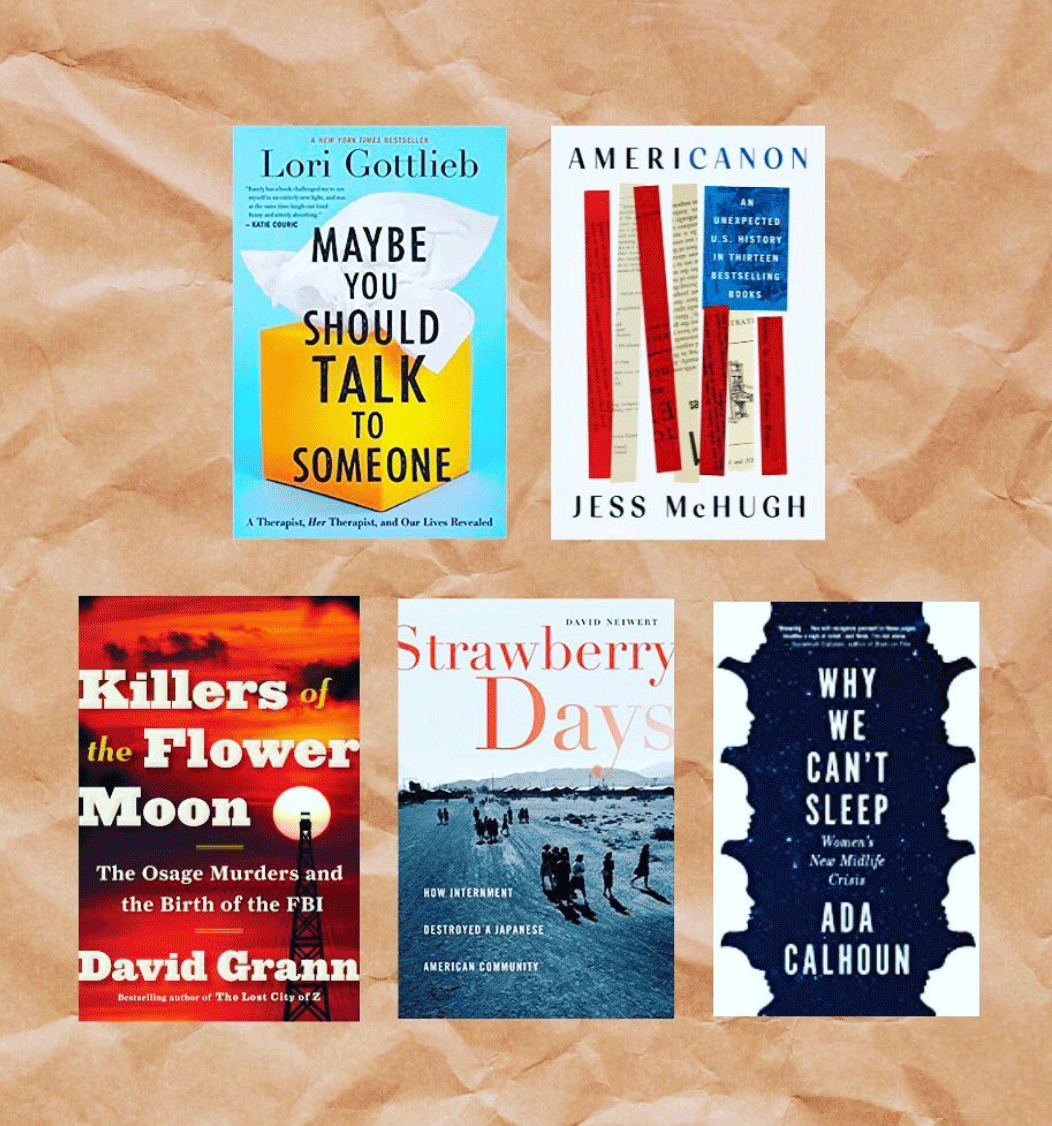
READ ALL ABOUT IT
Since 2012, I’ve been writing about books. And the act of reading. And the importance of story and narrative. But, mostly, the underlying theme of all I write is how taking a moment to stop and digest some longform text — instead of scrolling, instead of watching a video, instead of multitasking — can be one of the most grounding things we can do for ourselves. Here’s the one-stop online home for all this writing.
You can read more about me and my work by moseying over here. Want to peruse periodic “essay drops” — excerpts from my work-in-progress essay collection about Homesickness? Here ya go.

Becoming a Peach
While I’m not so sure about this transitive peach logic, I adore the rest of this sentiment by Natalie Goldberg. (I love her books about writing so very much. I think it was a teacher who first introduced me to the classic Writing Down the Bones — and I’ve never looked back. This excerpt’s from Old Friend from Far Away.)

Get ‘Er Done
I posted this picture — taken almost 19 years ago — on my personal Instagram on Sunday, Mother’s Day in the US. I love being a mom for the reasons that everyone always talks about, but I also love it because being a parent really requires you to dig within to uncover some sort of super strength that feels otherworldly. Like, I have no idea why I look so chipper sitting this way with a 21-month-old and a newborn, but there I am, reading a A Fly Went By to my two loves. Truly, how did I muster the wherewithal?! I write that not to conjure any sort of accolades (like omg look at meeeeee!!!), but to document that it happened because it’s a good reminder (mostly to myself) that there’s always a way, somehow, to get the job done.

A Ghost in the Throat
I am obsessed with this book.

Unstuck
A question from a couple of people IRL lately: “How’s the writing going?”
“I’m at a point where I can’t get my arms around what I’ve got” has been the reply. (Often accompanied by me gesticulating as if I am literally trying to get my arms around something and then me feeling inwardly frustrated because yes, this is a different and bigger project that other things I’ve undertaken, but I feel like I shouldn’t be as stuck as I am.)

A Little Life
I’m about 10 years late to the party, but now I’ve joined the party, and here’s what’s on my mind…

Challenge Accepted
From Newsletter Issue No. 17:
I like a new year — I think most people do, yes?

Fiction, Reality, and The Beautiful South
I’m really intrigued by “the role of the reader,” but on the flipside, I’m also very intrigued by how “real life” infiltrates fiction — or not.

Weird Ideas
I’ve been mulling over these two quotes from the bottom of yesterday’s @literaryhub daily email. I like them not just because they resonate with me as a writer, but they force me to reckon with why a book is “good” (in my eyes) or not. I love reading things that take me to unexpected places (I don’t mean that in a #readinginspo travel-via-reading kind of way) — writing that makes me go, “I would never have dreamed of mixing those words up like that.”

St. Patrick’s Day with Roddy Doyle
“If you are a writer you're at home, which means you're out of touch. You have to make excuses to get out there and look at how the world is changing.” – Roddy Doyle

Laura Zigman and Gap Khakis
In January, The Boston Globe published a story about the writer Laura Zigman. Maybe you remember her as the author of the bestselling 1998 novel Animal Husbandry. Or maybe you just remember the movie adaptation called Someone Like You starring Hugh Jackman and Ashley Judd. When I think of Animal Husbandry, I think of chick lit that was more literary than what is currently marketed that way. Remember the 1999 novel A Girl’s Guide to Hunting and Fishing by Melissa Bank? To me, these two novels — plus Bridget Jones’ Diary by Helen Fielding — encapsulate a specific late 90s vibe. They were like the literary world’s version of Gap’s dancing-in-khakis ads.

Through the Window
Nearly 10 years ago, I read this: “…writing is a matter of examining the world, reflecting upon it, deducing what you want to say, putting that meaning or message into words whose transparency allows the reader, now gazing through the same window-pane from the same position, to see the world exactly as you have seen it.” – Julian Barnes, Through the Window: Seventeen Essays and a Short Story

What a Reader Wants
“That’s all a reader really wants — to know the author better. Even if it’s a novel, they want to know the author.” – the novelist Cecil Dawkins to Natalie Goldberg.

So Much Nonfiction in 2022?
2022’s been shaping up to be my year of nonfiction. Normally I’d read maybe TWO nonfiction books a year, tops. But here I am clocking in at 5 so far. Wowee! In case you’re a fan of nonfiction, here’s what I’ve read:

Serendipitously Inspired by Marge Piercy
Story time.

Tell Me a Story
My son is nine years old and in the equivalent of fourth grade, an age when pupils have one main classroom (or “form,” as his school calls it) teacher save for specials such as science, PE, and art. We’ve been very pleased with this teacher, and one of her exemplary qualities is that she is attempting to teach her charges how to write well. Yes, they try their hands at “creative writing” and learn about different forms of poetry and prose, but most importantly, she is demonstrating how to – and demanding that the children do so, in the way only a good teacher can – “uplevel” their writing. She’s provided them with their own little booklet of mechanical writing tips and suggestions – much like the one I got from the most influential teacher I’ve ever had, although I didn’t learn any of these tricks of the trade in a formalized fashion until high school. (Nonetheless, thank you, Sr. O’Dea!) However, part of learning how to write well is also learning how to read well, which is why I loved looking in my son’s homework folder earlier this year and seeing his notes about context clues and how to interpret an author’s intent via the structure of his or her writing. And, despite not being a huge fan of fiction, he’s learning what makes a story, well, good. (What I’m waiting for is his chance meeting with a piece of fiction that will enchant him and make him want to curl up with a book and jump inside its pages. But I suppose I have to accept that not everyone enjoys this. Le Sigh!)

